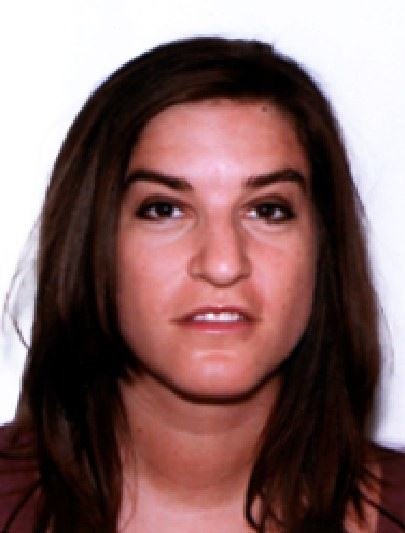To Buenos Aires and Beyond – My 15 Months in Latin America
In the right-hand sidebar are the ARCHIVES, listed by month. Here is a list of what you’ll find under each month:
LIVING IN BUENOS AIRES – JANUARY-OCTOBER 2006:
Including La Boca match (Apr), Luisa la Gaucha, the World Cup and Architecture (Jun), Feria de los Mataderos, World Tango Championships, Café de los Maestros at Teatro Colon (Aug), My Last Tango in Buenos Aires, My Last Days in Buenos Aires (Oct)
Trips from Buenos Aires:
MARCH 2006
Uruguay –Punta del Este, Cabo Polonio, Montevideo
Argentina –Pampas Road trip along the east coast down to Peninsula Valdes
Brazil – Rio Carnaval + Ilha Grande + Parati
APRIL 2006
Argentina – Delta Paraná and San Isidro
MAY 2006
Uruguay – Colonia, Montevideo, Punta del Este, Cabo Polonio
JUNE 2006
Argentina – San Antonio de Areco
AUGUST 2006
Uruguay – Montevideo
Argentina –Esteros del Iberá
SEPTEMBER 2006
Brazil/Argentina – Iguazu Falls + La Plata
OCTOBER 2006
Argentina – Oktoberfest in Villa Gral. Belgrano
NOVEMBER 2006
Uruguay - Living with Sacha in Montevideo for 2 Months
BACKPACKING – 15 MONTHS IN LATIN AMERICA:
FEBRUARY 2007
Argentina – Ushuaia, Tierra del Fuego, Patagonia
Argentina – Perito Moreno glacier and El Calafate
MARCH 2007
Chile – Torres del Paine
Chile – Puerto Natales
Chile – Navimag Cruise of the Patagonian Channels
Argentina – Rafting in Bariloche
Argentina – Visiting friends in Neuquen
Argentina – Guest at the Vendimia in Mendoza
Chile – Pucon and Villarica
Chile – Visiting friends in Santiago
Chile – Trip to Valparaiso (and Quintero) with Esteban
APRIL 2007
Argentina – Santiago, across the Andes to Tafi del Valle
Argentina – Quilmes ruins
Argentina – Cafayate canyon
Argentina – Salta
Argentina – Humahuaca, Iruya, San Isidro, Maimara
Argentina – Purmamarca, Hill of the Seven Colours
Argentina – Jujuy
MAY 2007
Chile – San Pedro Atacama
Chile – Pica (oasis village)
Chile – Iquique
JUNE 2007
Chile – Arica with friends
Chile – Lauca National Park
Peru – Machu Picchu and the Inca Trail
JULY 2007
Peru – Cusco: the town
Peru – Cusco: Saqsaywamán and Inti Raymi
Peru – Cusco: the Sacred Valley and Cusco surrounds
AUGUST 2007
Peru – Arequipa
Chile – Santiago
Chile – Concepción
SEPTEMBER 2007
Bolivia –Uyuni Salt flats and stunning red, green and white lagoons
Bolivia – Potosi
Bolivia – Sucre
Bolivia – La Paz and Tiwanaku ruins
Bolivia – Lake Titicaca, Copacabana and Isla del Sol
Peru – Lake Titicaca, floating reed islands of the Uros
Bolivia – Rurenabaque, the Bolivian Amazon
OCTOBER 2007
Bolivia – Visiting friends in Cochabamba
Bolivia – Visiting friends in Santa Cruz
Bolivia – Samaipata with friends
Bolivia – Chiquitos region and its Jesuit Missions
NOVEMBER 2007
Bolivia – Villa Tunari
Chile – Back to friends in Arica
Peru – La Paz to Lima
Peru – Huanchaco and Chan Chan ruins
Peru – Sipan ruins and Pimentel, near Chiclayo
Peru – Miraflores district of Lima
DECEMBER 2007
Mexico – Mexico City
Mexico – Teotihuacan ruins
Mexico – Mexico City and Luis Barragan
Mexico – Oaxaca and Monte Alban ruins
Mexico – Mayan highlands of Chiapas region
Mexico – Palenque ruins and Aguas Azules
JANUARY 2008
Guatemala – Quezaltenango (Xela)
Guatemala – San Pedro de Atitlan
Guatemala – Antigua and active Volcano Pacaya
Guatemala – Lake Atitlan
Guatemala – Quezaltenango and Viejo Palmar
Mexico –Puerto Arista
FEBRUARY 2008
Honduras - Copan ruins
Honduras – Omoa
Honduras – Scuba Diving off Utila, Bay Islands
MARCH 2008
Guatemala – Livingston and Rio Dulce
Guatemala – San Pedro de Atitlan
Guatemala - Tikal ruins
Belize – Cave of the Stone Sepulcher, San Ignacio
Belize – Hopkins, Garifuna village
APRIL 2008
Belize – Caye Caulker and the Blue Hole
Mexico – Tulum ruins and diving the sink holes
Mexico – Chichen Itza ruins
Mexico – Holbox
Cuba overview - A Refreshingly Different Experience in Latin America
Cuba – Havana
Cuba – Trinidad
Cuba - Santa Clara
MAY 2008
Cuba – Santiago
Cuba - Baracoa

















